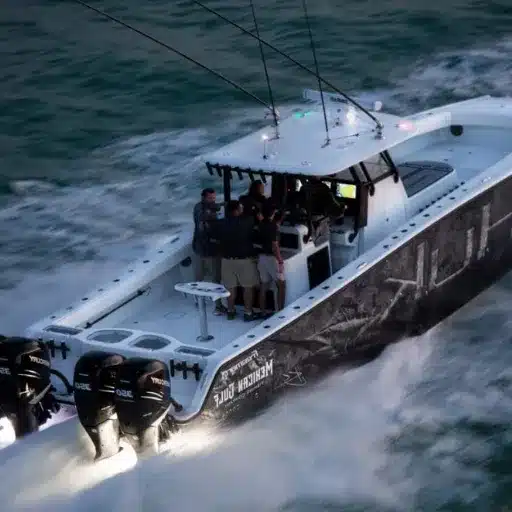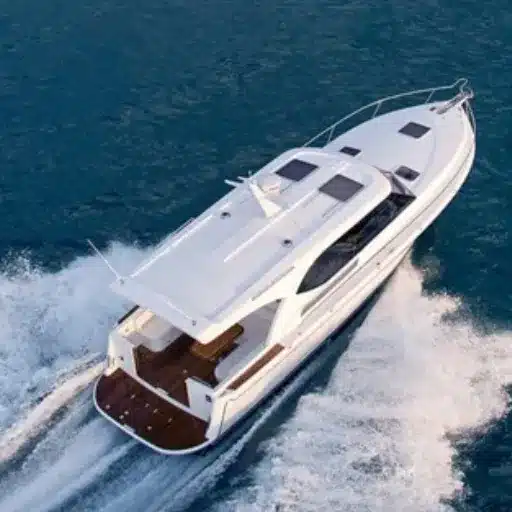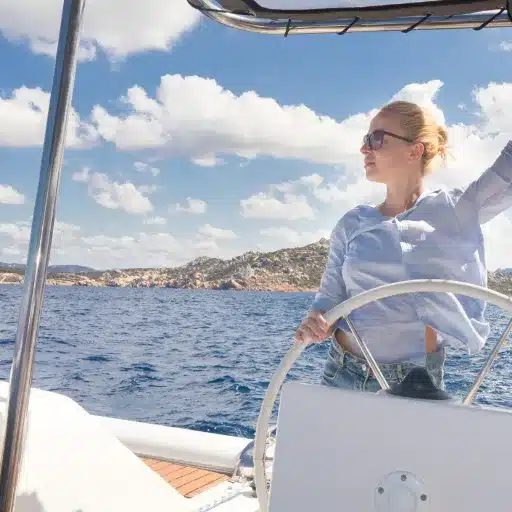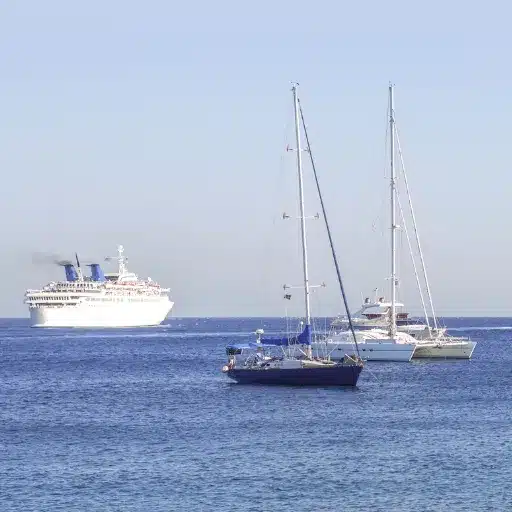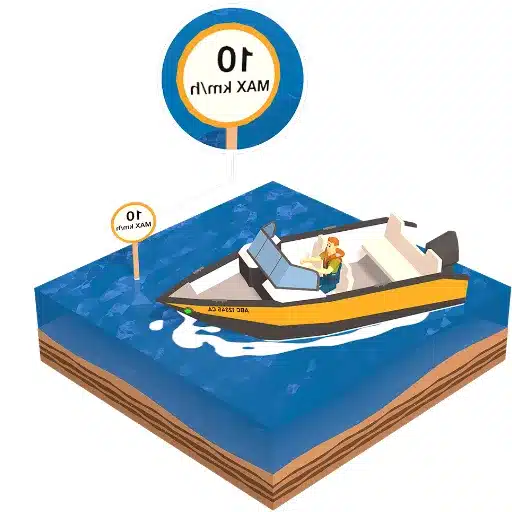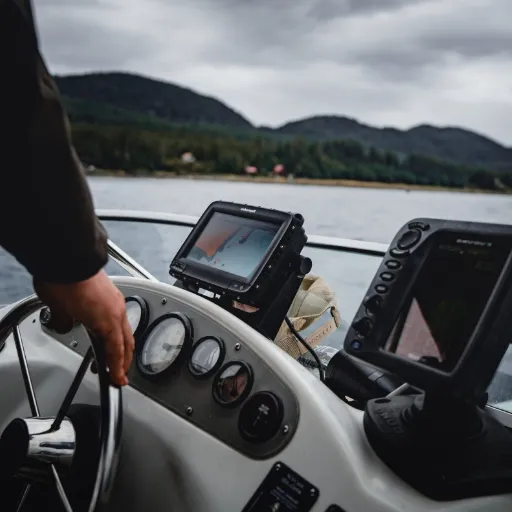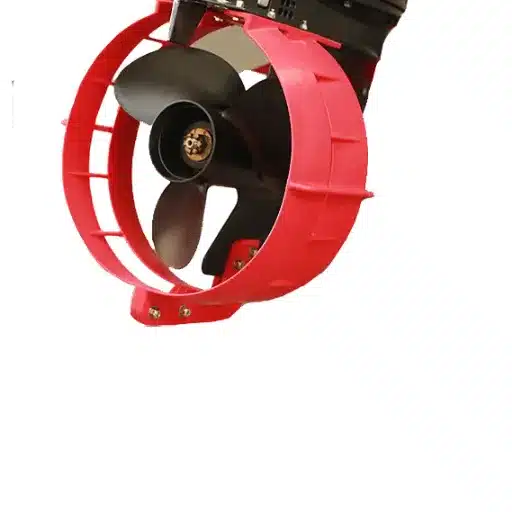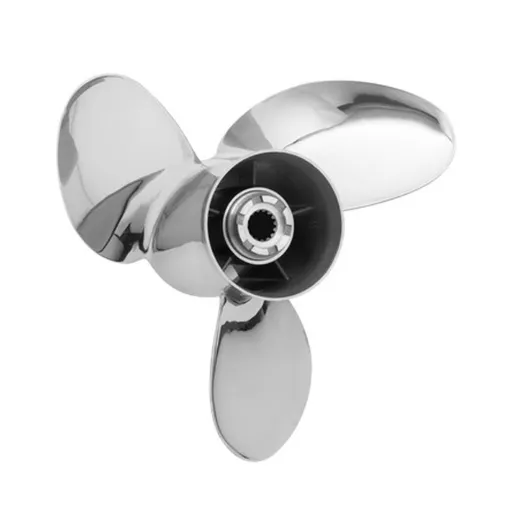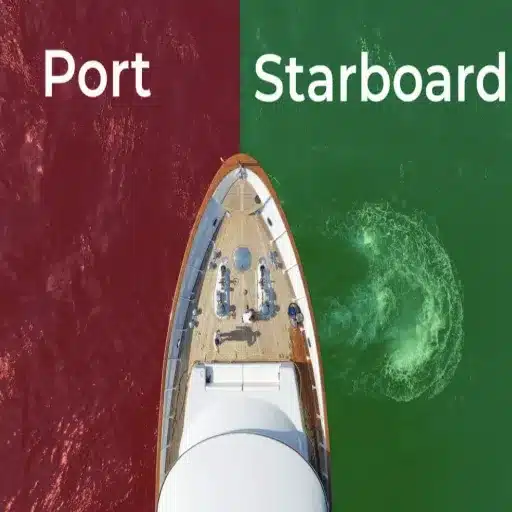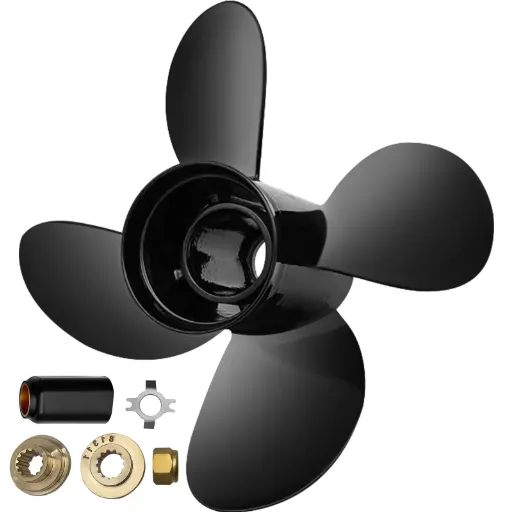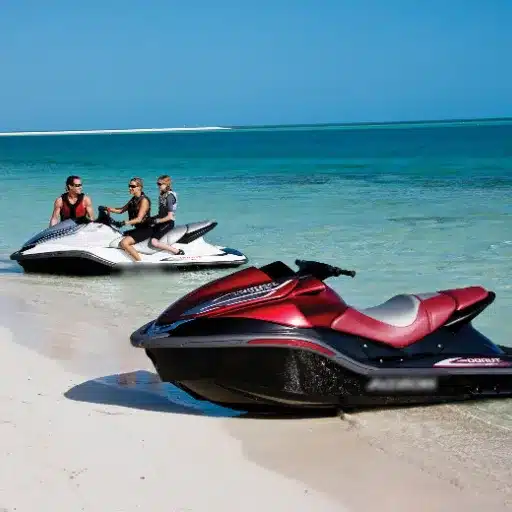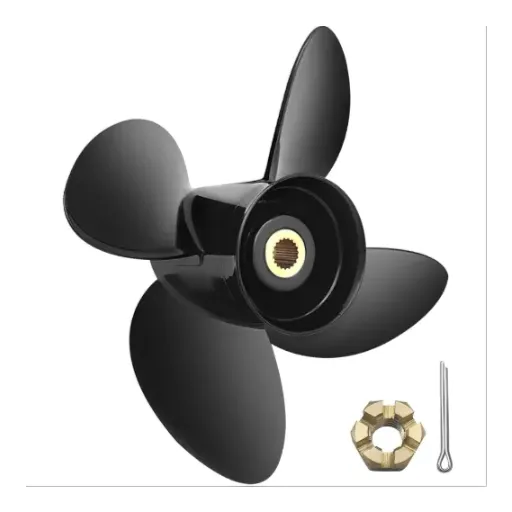Besides learning navigation for operating a boat safely, one must know the factors that influence safe speeds on the water. Whether it is a calm lake or somewhat choppy seas, having at least a rough idea of your craft’s limits and the prevailing conditions is the recipe for safety and pleasant times. This book aims to shed light on the most important factors to consider when determining a safe boating speed in 2025, taking into account advancements in boat technology, updated safety regulations, and practical tips for boat operators. By the end of the article,
Understanding Safe Speed for Your Boat
What Is Considered a Safe Speed?
A safe speed for any boat is dependent on a variety of parameters, including environmental conditions, the capabilities of your vessel, and safety regulations that are generally in force. Among other factors, visibility, density, and type of water traffic, weather, and the level of danger in the area all play a role in determining the speed. For example, fog or heavy rain can be such a hindrance to visibility that traveling at speed could become dangerous; therefore, slower travel must be considered to allow adequate time for corrective action.
The very concept of safe speed has also changed with advances in boating technology. Increasingly, vessels are being equipped with GPS, radar, and automatic navigation aids that enable operators to assess the position of nearby objects and maintain control accurately. But these tools do enhance safety; one must never put blind reliance on technology without considering judgment and situational awareness.
These are further regulatory guidelines that, in many parts of the world, set speed limits according to specific areas, such as no-wake zones, marinas, or environmentally sensitive zones. Such regulations are generally aimed at mitigating environmental impact, ensuring safety for swimmers, kayakers, or other individuals boating in close proximity.
Key Principle:
Safe speed means adjusting the speed of travel to the conditions. One should therefore be able to stop the vessel within the visible distance to avoid collisions or groundings in case of sudden changes in conditions.
Why Safe Boat Speed Matters
Safe boat speed plays a crucial role for various reasons, from protecting marine ecosystems to safeguarding recreational boaters, commercial operators, and the vessels themselves. Reasonable operating speeds help prevent collisions and minimize other hazards, especially in busy waterways or areas of less visibility. According to recent studies, speeding greatly increases the chances of being involved in an accident. This is because reaction times and decision-making become crucial in such situations.
Benefits of Maintaining Safe Speed:
- Environmental Protection: Lower speeds mean less wake is produced, thus preserving the shoreline ambiance in environmentally sensitive areas
- Wildlife Safety: Coastal zones that are particularly sensitive to their vegetation or nesting birds benefit significantly from speed restrictions
- Fuel Efficiency: Maintaining proper speed leads to improved fuel efficiency, saving money while reducing carbon emissions
- Legal Compliance: Speed regulations help ensure safe operating speeds and prevent legal consequences
Speed regulations are designed to ensure safe operating speeds under various circumstances. Laws have been enacted to enhance safety and preserve the local ecosystem. Boaters who gallop unreasonably endanger their own life may be prosecuted with fines. Beyond safety and environmental considerations, maintaining a proper speed leads to improved fuel efficiency, thereby saving money while reducing carbon emissions. Hence, safe boating is a right, sustainable, and economical thing to do.
Factors That Determine Safe Speed on the Water
The basic factors influencing a safe speed for a vessel are environmental, technological, and situational. Visibility is one of the most significant factors. After all, less visibility means lower speed to avoid collisions. A waterway’s traffic density is another crucial factor; crowded areas, with many other vessels around, require low speeds from every operator for safety. Water conditions may also be a critical factor in adjusting vessel handling; however, they can be considered safe to navigate. Speed must be adjusted when faced with strong currents, high waves, or debris.
| Factor | Impact on Speed |
|---|---|
| Visibility | Less visibility requires significantly reduced speed |
| Traffic Density | Crowded areas require low speeds for safety |
| Vessel Type & Size | Smaller vessels more susceptible to turbulence; larger vessels need more stopping distance |
| Operator Experience | Experienced operators can better assess conditions; inexperienced should use extra caution |
| Environmental Factors | Wildlife areas and sensitive ecosystems may have speed restrictions |
The type and size of the vessel are also vital factors to consider. Smaller ships are nimble but also more susceptible to turbulence and wave action; therefore, they require careful speed management. Larger ships, on the other hand, take longer to stop or maneuver, making controlled speed all the more necessary in tight quarters or unpredictable conditions. Radar and GPS help operators to evaluate their surroundings; they do not replace active vigilance or critical thinking.
Speed restrictions can also be imposed for environmental reasons, aiming to protect wildlife and the ecosystem. Fast movements of boats in areas of marine life or along coastlines might interfere with habitats or cause harm, so it is essential to comply with the posted speed restrictions. And the last factor: the operator’s experience. More seasoned operators may be able to assess dynamic conditions and determine an appropriate speed. In contrast, inexperienced operators are safer when applying extra caution in deciding on speeds.
Key Factors in Determining a Safe Speed
Condition of the Water and Its Effects on Speed
Water conditions are one of the most critical factors in determining a safe speed regime for a boat. If the waters are calm and clear, we can generally allow for high speed since visibility and control are optimal. However, in rough waters plastered with high waves or strong currents, lower speeds have to be maintained, lest you lose stability and possibly be capsized. From another perspective, sailing through choppy seas or near areas where tides behave erratically will require speed adjustments to assure safety.
Water Condition Guidelines:
- Calm, Clear Waters: Higher speeds generally acceptable with optimal visibility and control
- Rough Waters: Significantly reduce speed to maintain stability and prevent capsizing
- Shallow Areas: Restrict speed entirely to prevent hull or impeller damage
- Rivers/Estuaries: Consider flow velocity and sedimentation effects on maneuverability
Additionally, certain water conditions, such as shallow areas or locations with submerged hazards, may entirely restrict your ability to accelerate safely. Speeding in such waters might damage the boat hulls or impellers. Additionally, when boating on rivers or estuaries, flow velocity and sedimentation can affect how well one can maneuver their craft, thus requiring more cautious and calculated speed decisions.
Finally, weather-wise, water changes may rapidly turn calm waters into fearful situations in case of sudden storms. As waves and visibility continue to change, experienced boat operators may also need to adjust their speed accordingly. By paying attention to water conditions and heeding them beforehand, operators protect themselves while also ensuring the safety of their passengers and the marine environment.
Boat Type and Design Considerations
The type and design of a boat really determine how it performs in the water, how safe it is, and whether it is suitable for the specific water activity in question. Hulls accommodate varying designs and uses and can be flat-bottomed, V-shaped, or multi-hull. Flat-bottom boats perform well in calm water conditions; therefore, they are ideal for fishing or recreational use. V hulls, however, slice through choppy waters faster and are more commonly used for sports or cruising. Multi-hull boats, such as catamarans, are more stable and spacious, making them ideal for long voyages or group activities.
Flat-Bottom Boats
Best For: Calm waters, fishing, recreational use
Performance: Excellent in calm conditions
V-Hull Boats
Best For: Choppy waters, sports, cruising
Performance: Slices through rough waters effectively
Multi-Hull Boats
Best For: Long voyages, group activities
Performance: More stable and spacious
The kind of material selected affects the durability and maintenance needs. Fiberglass will generally provide a strong and low-maintenance structure, although aluminum is often preferred for its lightness and resistance to corrosion in freshwater. Modern developments in boat technology propose an environmentally conscious design with hybrid propulsion systems that promise to lower the operational costs.
Understanding the singularities of different boat types and designs will ensure that a suitable vessel is selected to meet your needs, enhancing both utility and enjoyment simultaneously.
Weather Conditions and Their Influence on Safe Speed
The weather is a crucial consideration in determining the speed at which a violation can safely operate. The winds, visibility conditions, wave heights, and precipitation would severely affect the maneuverability of a boat, as well as the safety of its passengers.
Given that strong winds create rough waters, it becomes difficult to keep balance. It is safer in such situations to maintain a low speed, allowing the boat to be controlled more effectively and reducing the chances of overturning. Other weather conditions that require a reduction of speed due to poor visibility include heavy rain, fog, or darkness. Operators must reduce speed when visibility is inadequate to avoid obstacles, other vessels, or hazards in the water. The data suggest that poor visibility due to bad weather is often related to boating incidents, emphasizing the need for caution.
Weather-Related Speed Adjustments:
- Strong Winds: Reduce speed to maintain balance and control
- Poor Visibility (Fog, Rain, Darkness): Significantly reduce speed to allow reaction time
- Large Waves: Adjust speed to reduce stress on vessel structure and propulsion
- Cold Weather: Consider icy deck surfaces and potential engine performance issues
Another consideration is the height of waves; larger waves put more stress on the vessel’s structure and propulsion. Speed adjustments are then made to lessen the effect of the waves, rendering the ship safer to navigate. Additionally, cold weather conditions can be unsafe, as surfaces on the deck may become icy. Furthermore, they can hinder the engines from functioning properly in low temperatures, and thus safe navigation may require some speed adjustments.
Adaptation of speed to general meteorological conditions is the utmost safety precaution that helps prevent the risk of accidents on water. Through careful evaluation of weather and speed changes in real-time, biters become highly effective against diverse environmental conditions.
Boating Safety Education and Practices
Essential Safety Gear for Your Vessel
Your vessel must be well-equipped with safety gear for secure cruising down the waterways. One vital item you cannot go without is PFDs. Every passenger must be provided with an approved PFD, properly fitting, as it best reduces the risk of drowning in an emergency. Marine fire extinguishers must also be carried, which come in numbers and types depending upon the dimensions and arrangement of your vessel.
Essential Safety Equipment Checklist:
- Personal Flotation Devices (PFDs) – Properly fitted for every passenger
- Marine Fire Extinguishers – Appropriate number and type for vessel size
- Navigation Lights – For nighttime or reduced visibility conditions
- Audible Signaling Devices – Whistles, horns, or bells
- Visual Distress Signals – Flares or signaling flags
- Marine First-Aid Kit – Waterproof bandages, antiseptics, seasickness remedies
- VHF Marine Radio – For weather alerts and emergency communication
- Anchor with Line – To prevent unwanted drifting
Navigation lights are another vital component, especially when night falls over the scene or visibility is reduced due to fog or rain. Audible signaling devices, such as whistles, horns, or bells, serve as an essential means of communication with other vessels and can also be used to attract attention in distress. During overnight trips, having visual distress signals, such as flares or signaling flags, will help you summon help if the need arises.
Further on the line is a versatile marine first-aid kit, which should include waterproof bandages, antiseptics, and a remedy for seasickness. A VHF marine radio added to the mix keeps the communication channels open at all times — weather alerts and requests for assistance can be channeled through it. Lastly comes an anchor, with plenty of line, to prevent your boat from drifting in situations that are unwanted, thus protecting both the ship and its passengers.
Having these essentials aboard and ensuring that they are regularly inspected and maintained lays an essential foundation for a safer and more prepared boating experience.
Boating Safety Courses and Resources
Boating safety courses have proved to be one of the most effective methods for enhancing one’s general knowledge of boating and ensuring one’s safety while on the water. Various organizations, including state boating agencies, the U.S. Coast Guard Auxiliary, and the National Safe Boating Council, offer complete courses for the beginner and experienced boater alike. Subjects covered include navigational rules, emergency procedures, use of boat safety equipment, and environmental stewardship.
Course Topics Include:
- Navigational rules and regulations
- Emergency procedures and response
- Proper use of boat safety equipment
- Environmental stewardship and conservation
- Weather interpretation and planning
- Communication protocols and procedures
Complementing each other are interactive tools and online sources for the benefit of rescuers, enabling access to critical information. For example, digital safety checklists, navigation apps, and instructional videos help boaters learn and respond with confidence in various scenarios. In a recent study, the findings revealed that people who took an accredited boating safety course had far fewer accidents, thereby highlighting education as a crucial factor in reducing maritime hazards. Alongside on-water practice, these types of training help to ensure safe waterways and responsible boaters.
Case Studies on Speed-Related Boating Accidents
The famous case involved a high-speed crash on a popular lake, where the boat, traveling at an excessive rate during peak boating hours, failed to react in time to avoid hitting another stationary ship. The wreck led to significant bodily injury and highlighted non-adherence to speed regulations. Recent statistics reveal that excessive speed remains one of the top causes of boating accidents, contributing to nearly 25 percent of collisions each year.
Accident Statistics:
Excessive speed contributes to nearly 25% of boating collisions annually, making it one of the leading causes of maritime accidents.
Another case occurred in a coastal area, where a speedboat collided with a smaller vessel while attempting to overtake it in a narrow channel. Investigators found that the speedboat operator severely underestimated the stopping distance at high speed, resulting in significant damage to both vessels. The case, henceforth, reinforced the need to combine speed control with heightened alertness over the crowded waterways.
Such scenarios underscore the urgent need for robust enforcement of speed limits on water bodies and for educating the public on the dangers of careless operation. With these two concerns addressed, the aim would be to reduce the number of preventable accidents and thus promote safety in general in marine environments.
Speed Limits and Regulations
Grasping the Local Speed Limits for Boating
Boat speed limits vary depending on the locality, type of water, and local regulations. These speed rules are meant to protect boat operators and surrounding wildlife, minimizing the risk of an accident. For example, many populated lakes or rivers have designated “no wake” zones in which boats must idle so that potential waves may not threaten smaller vessels, swimmers, or fragile ecosystems. In addition, speed limits are generally maintained at 5-10 mph in densely crowded marinas, allowing boats to maneuver safely and avoid collisions.
| Area Type | Typical Speed Limit | Purpose |
|---|---|---|
| No Wake Zones | Idle Speed Only | Protect smaller vessels, swimmers, ecosystems |
| Marinas | 5-10 mph | Safe maneuvering, collision avoidance |
| Wildlife Areas | Reduced Speed | Protect marine life (e.g., manatee zones) |
| Night Boating | Significantly Reduced | Compensate for poor visibility |
In some coastal areas, stricter controls may be imposed in locations with active wildlife occurrences. For example, certain areas where manatees are spotted will require boats to slow down to prevent injuries to marine life. Furthermore, boating at night almost always requires reduced speeds because of poor visibility and an increased risk of collision. These local restrictions emphasize the importance of being familiar with the regulations applicable to one’s area to follow them and ensure the protection of everyone in the waterways. Technology, such as GPS-based marine navigation systems, can also assist operators in identifying restricted zones and displaying speed limits in real time, thereby encouraging adherence to safety protocols.
Legal Implications of Exceeding Safe Speeds
Exceeding the stipulated speed limit in restricted zones can result in severe legal consequences for the operator. An operator violating these speed restrictions can be fined or cited for the violation, or, in more extreme cases, where the infraction is egregious, their license could be suspended or revoked, all contingent upon local rules. For example, reckless boating penalties can escalate in places where excessive speed endangers wildlife and marine habitats, as these areas tend to be more strictly protected under environmental legislation.
Potential Legal Consequences:
- Fines and Citations: Immediate financial penalties for speed violations
- License Suspension/Revocation: For egregious or repeat violations
- Civil Liability: Financial responsibility for damages, injuries, medical expenses
- Criminal Sanctions: In cases of repeated violations or reckless operation
- Enhanced Penalties: In environmentally protected areas
In addition to potential criminal penalties, legal actions can escalate into civil liabilities, especially if violating speed limits results in collisions or injuries. These are situations where operators may be held financially responsible for damages, including repair costs, medical expenses, and other related expenses.
Repeatedly breaking laws can, in some states, result in criminal sanctions, underscoring the importance of adhering to regulations. Advanced navigation tools and technologies, which in some instances are also mandated, can help mitigate such legal repercussions by providing real-time reminders about speed limits and prohibited zones. Staying informed and adhering to the new rules, besides reducing the risk of legal complications, also promotes safety, environmental protection, and mutual respect among waterway users.
How to Keep Updated on Changing Regulations
Keeping up with changing regulations ensures compliance; therefore, it is vital to employ trustworthy sources in conjunction with proactive methodologies. One of the most obvious routes to take would be to sign up for newsletters or updates from regulatory bodies governing your area, as these would provide a detailed explanation of changes in policies and their implications. Industry-specific forums or professional bodies will also keep one abreast of the latest developments through discussions and shared resources.
Stay Updated Through:
- Regulatory Body Newsletters: Sign up for official updates from governing authorities
- Industry Forums: Participate in professional boating communities
- Mobile Apps: Use technology platforms that provide real-time regulatory alerts
- Online Databases: Regularly check established sources for regulation changes
- Local Marine Police: Maintain contact with local enforcement agencies
Use technological apps or platforms that collect and process the regulatory updates and alert subscribers in real time, coupled with detailed analytics. Also, reputable, established online sources or databases can be called upon regularly to cross-examine the information and demonstrate its veracity. By combining these approaches, one can attain an exhaustive understanding of new standards and apply changes correctly where necessary.
Measuring Your Boat’s Speed
Technology and Devices for Speed Accuracy
Speed measurement for my boat requires high-tech and trustworthy devices to ensure that the readings are accurate and consistent. One such device is a GPS speedometer. Since satellites determine the real-time speed of an object, a GPS speedometer measures speed with a high degree of accuracy. Against conventional speedometers, GPS speedometers are unaffected by the effects of water currents or wind. This makes them the choice of pleasure or competitive boaters. Today, most GPS instruments offer route tracking and waypoint marking, providing a comprehensive navigation experience.
GPS Speedometer
Accuracy: High degree of precision using satellite technology
Advantages: Unaffected by water currents or wind
Features: Route tracking, waypoint marking, comprehensive navigation
Paddlewheel Sensor
Function: Measures speed relative to water
Best For: Calm waters, maintaining consistent speed
Note: Should be used with GPS for cross-verification
Another I consider indispensable is the paddlewheel sensor, which measures the boat’s speed relative to the water. It is mounted on the hull, with a spinning paddlewheel creating speed readings. It works well in calm waters and is suitable for maintaining a consistent speed. However, I prefer to use GPS for an additional check on the readings, as well as considering any environmental impacts. For boats and their operations, more advanced systems also exist: ultrasonic speed logs use sound waves to measure the speed of the water with great accuracy.
The combined use of this technology enables me to track my boat’s speed with confidence, ensuring safety and optimal performance. These instruments—enabling more than just speed—help manage fuel efficiency and navigation. The combined use of these instruments ensures that the decisions made are based on accurate input readings, regardless of the conditions.
How to Calculate Your Boat’s Safe Speed
When estimating a safe speed for my boat, I will consider several key factors, including visibility, other traffic, water depth, and weather conditions. Visibility remains the most critical aspect; if anything restricts my sightlines, such as fog, rain, or darkness, I lower my speed and proceed cautiously. I also consider the traffic in the waterway; if the way is crowded, I keep my speed low so I have time to maneuver around other vessels, if necessary. Lastly, the depth of water is equally essential to prevent any chances of grounding in uncharted waters or shallow areas.
Safe Speed Calculation Factors:
- Visibility Assessment: Reduce speed proportionally to visibility limitations
- Traffic Density Evaluation: Allow adequate maneuvering time in crowded areas
- Water Depth Consideration: Prevent grounding in shallow or uncharted waters
- Weather Condition Analysis: Adjust for waves, currents, and wind effects
- Vessel Characteristics: Account for your boat’s handling and stopping distance
- Technology Integration: Use GPS, depth finder, and other instruments for real-time data
Then, I am all ears for the weather forecast, waves, currents, and winds. In rough seas, strong currents, or high winds, a safe speed must be decreased. Slowing down provides better control and reduces the risk of an accident. I also consider the boat’s design and characteristics. I know how it handles and its stopping distance at various speeds to gauge a safe operating speed.
Then I allow the instruments-a GPS, a depth finder, and others-to send me real-time information for my decision-making process. Whenever doubting, I lean toward security first. Thus, by considering all the factors, I will be able to set a speed that I consider absolutely safe for myself, others on board, and the environment around us.
Real-Life Data: Safe Speed Case Studies from 2025
The navigation experience of 2025 brings a perfect example of why having the right attitude toward conditions is essential. Navigating through a narrow channel in the morning fog, I relied heavily on my GPS and radar systems for positioning between conflicting vessels and the shoreline. With visibility less than 200 feet, my speed dropped drastically; hence, my reactionary capacity toward any unforeseen obstacle was maximized. This slow, safety-first approach brought me past a small fishing boat that was suddenly made visible by the mist, and that was yet another assurance that going slow was the right choice when your life depends on it.
Case Study 1: Fog Navigation
Situation: Morning fog with less than 200 feet visibility
Action: Dramatically reduced speed, relied on GPS and radar
Outcome: Successfully avoided collision with fishing boat that appeared suddenly
Lesson: Technology assists, but slow speeds provide crucial reaction time
Another time, I had to go by a truly packed marina during rush hour. The tides put up strong currents, and several recreational craft were moving about almost unpredictably. I concentrated on keeping a speed that allowed me complete control of my craft, but it was easy for others to time my movements. I remained keenly observant of the environmental situation to anchor safely and without incident amid all the chaos. Here lies the importance of assessing the real-time environment and remaining adaptable to avoid compromising safety.
Case Study 2: Busy Marina Navigation
Situation: Crowded marina during rush hour with strong currents
Action: Maintained controlled speed allowing predictable movements
Outcome: Safe navigation and anchoring despite chaotic conditions
Lesson: Consistent, controlled speed helps other boaters predict your movements
These experiences reveal that a proper balance needs to be found between technology and situational awareness. With an array of navigation tools under my belt, coupled with careful consideration at every turn, I shall know no speed that does not favor safety, regardless of difficulties faced. It is the very mindset that has kept me from accidents and allowed me to operate smoothly during more complex or riskier situations.
Reference Sources
-
Knowing when to operate your vessel at a safe speed involves considering factors such as vessel type, weather, and water conditions to determine safe speeds.
-
Safe Speed by Boater Exam – Explains how visibility, wind, and water conditions influence safe boating speeds.
-
Safe Boating by Virginia DWR – Highlights the importance of adjusting speed based on environmental and navigational conditions.
-
What Is a Safe Speed? by Boat-Ed – Defines safe speed and provides guidelines for avoiding collisions and ensuring safety.
-
What Determines If a Speed Is Safe for Your Boat by Trident Marine – Covers key factors like wind, water, vessel type, and local speed regulations.
- Click here to read more.
Frequently Asked Questions (FAQs)
How can I say the speed is safe for my boat?
To determine if the speed is safe, consider the type of boat being used, water conditions, and the traffic of vessels in the area. With this in mind, speed up or slow down to achieve a cruising speed for the boater’s pleasure. Unsafe conditions occur with crowded areas and free waterways. Maintain posted speed limits at all times; always maintain a speed that allows you ample time to take effective action in avoiding all forms of collision hazards. Local boating laws will also help you operate at safe speed limits.
What factors will affect safe boat speed?
Several factors influence a safe boating speed, including water conditions, weather, and the presence of other vessels. For instance, under rough water conditions or in the event of bad weather, one should maintain a reduced speed to retain control of the ship. Being well-versed in the local boating traffic can enable you to adjust your speeds appropriately, thereby avoiding potential accidents. Different speeds apply to different boats because some types are built to operate at incredible speeds, while others are not. Your experience and knowledge of safe boating practices also influence your decision on what constitutes safe speed.
What is considered a safe operating speed for my vessel?
When referring to vessel operation, a safe speed grants sufficient control to maneuver through a variety of conditions and obstacles. Such speed may depend on the boat and water conditions, in addition to local laws concerning boating. The best general advice for an operator is to always proceed at a speed at which he or she can take proper and effective action to avoid collision with any vessel or object. Speed limits are generally posted in the waters of particular jurisdiction areas; check these posted speed limits and obey them at all times. However, your adjustment to those speed limits must rely on actual circumstances and conditions. Taking safe boating classes would turn out very useful in understanding the matter of safe boat speed.
So, how do these posted speed limits ensure boating safety?
Posted speed limits are designed to promote safety on various watercrafts because they are established for the benefit of specific waterway users. These limits shall be followed to avert any accident, usually when there is heavy traffic or relatively narrow channels. When operating your vessel, ensure that you maintain the speed set by these limits. These posted speed limits must never be disregarded, as there are severe consequences, including collisions and sometimes capsizing. So, familiarize yourself with the speed limits in any boating area you are in, and do a safe speed so that the rest of the experience remains pleasurable and safe.
What things shall I look for with vessel traffic when adjusting my speed?
When setting your speed, several factors must be considered, including the density of vessel traffic and its behavior in your area. A somewhat busy waterway must afford a speed of reaction to performers aboard in case the actions of other boaters require an immediate response from you. Maintaining a safe distance from other vessels is going to save you from possible collisions, so you have enough time for action to avert the collision. During heavy traffic, it is advisable to reduce your speed in narrow channels and near docks. Thus, a good knowledge of how traffic flows will go a long way toward keeping you safe in a boat.
How do I keep my boat safe in variable water conditions?
In other words, assess the water conditions before proceeding. Winds, waves, or currents that may decrease or increase the vessel’s speed will affect the handling characteristics of the craft. Adjust your speed accordingly so that you will always be in control. You may want to slow down in bad weather to avoid a capsize situation. Get to know the waterway around any hazards and crawl through such areas. Being aware of the environment and estimating the right speed to maneuver into it will be paramount for safe navigation and a pleasurable water journey.




